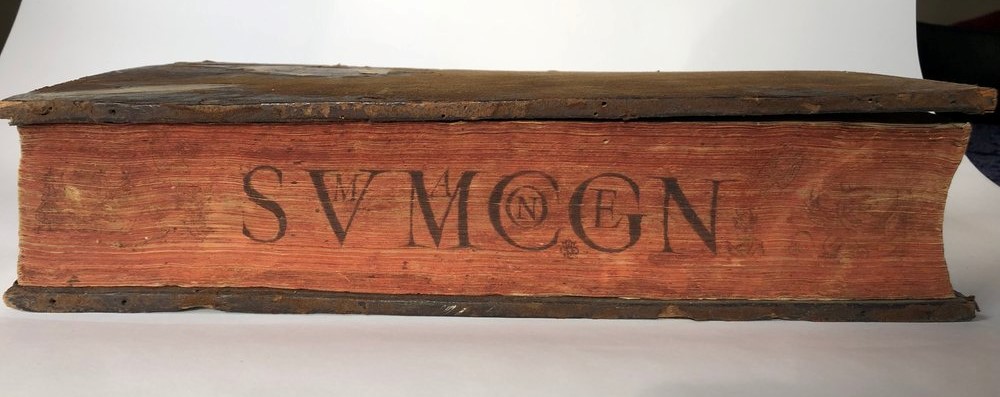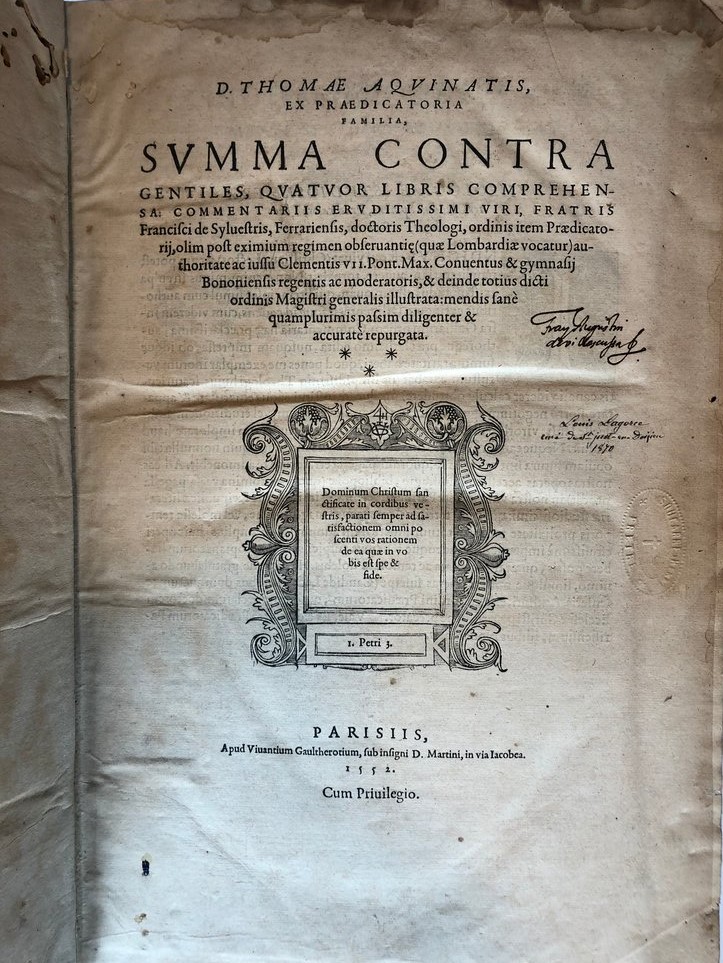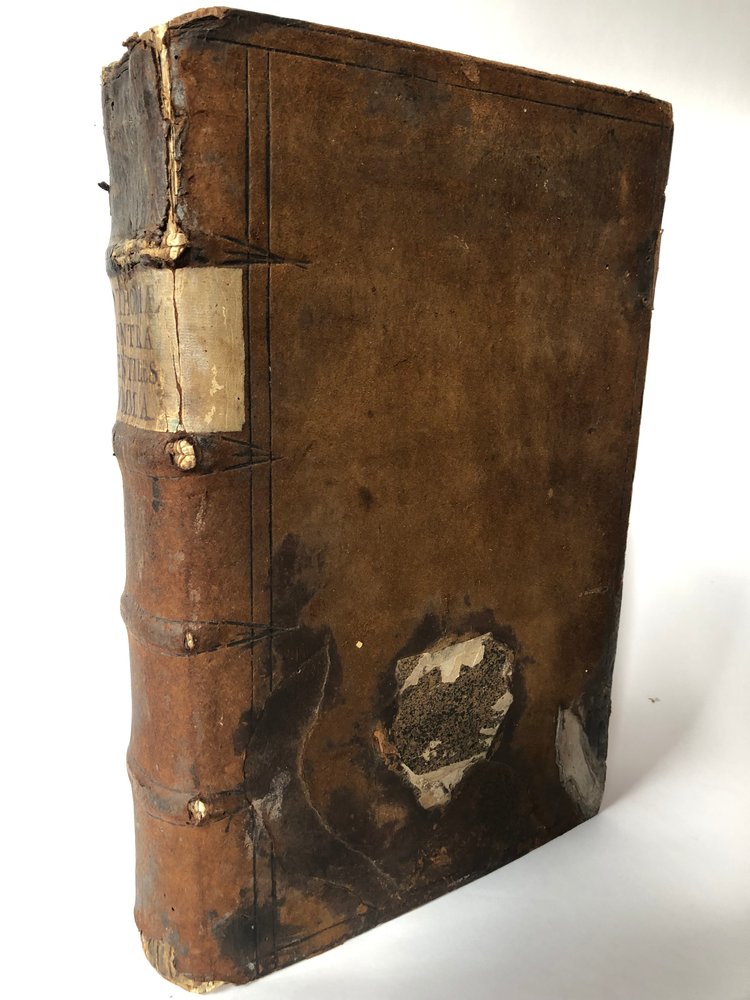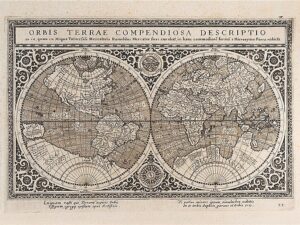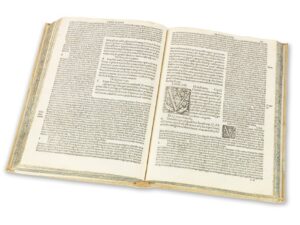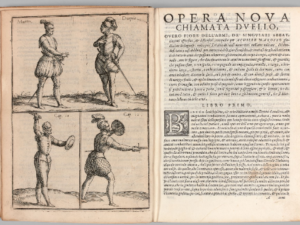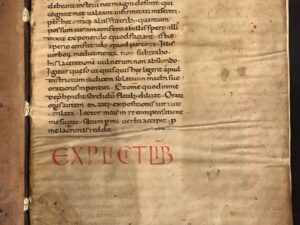First edition. The commentary on Thomas’ Summa contra gentiles published in these volumes was written by the Dominican theologian and then master general of the Order Francis Sylvester of Ferrara. (Ferrara 1474- Rennes 1526). Silvester wrote many remarkable works, principal among which is the monumental “Commentary on the Summa contra Gentiles of St. Thomas Aquinas”, published simultaneously by two printers in Paris with the same foliation and pagination. Worthy of special mention are also his explanations of various books of Aristotle. In his “Apologia de convenient a institutorum Romance Ecclesice cum evangelica libertate” (Rome, 1525) he defended the primacy and the organization of the church against Luther.
Written in four books between 1259 and 1265 the Summa contra Gentiles is a theological and philosophical treaty meant to help missionaries in explaining the Christian religion and defending it against dissenting points of doctrine in Islam and Judaism. To this end, Aquinas could rely on a substantial body of shared doctrine, especially tenets of monotheism, in the case of Judaism the shared acceptance of the Old Testament as scripture and in the case of Islam the (at the time) shared tradition of Aristotelian philosophy.
Thomas Aquinas (1225-1274) came to the University of Paris in 1245, and there for three years heard the lectures of Albertus Magnus, taking his Bachelor’s degree in 1248. He returned to the University in 1253, took his Master’s degree in 1257, and thereupon lectured in theology for two or three years, leaving the University in 1259 or 1260. He wrote the Summa contra Gentiles in Italy, under the pontificate of Urban IV (1261-1264), at the request of St Raymund of Pennafort. He went for the third time to the University of Paris in 1269, finally returning to Italy in 1271. Though the Summa contra Gentiles was written in Italy, there is reason to believe that the substance of it was got together during the Saint’s second residence at Paris, and formed the staple of his lectures in the University. The more celebrated Summa Theologica was a later work.

